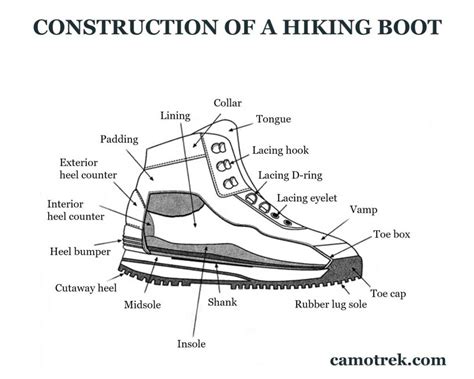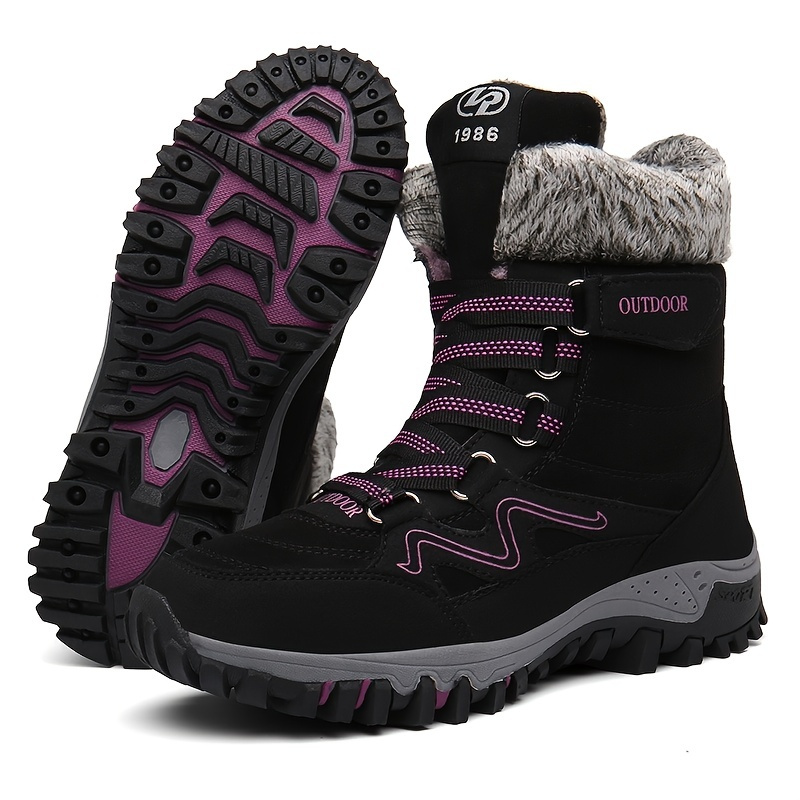5 Hiking Boot Tips

Hiking boots are a crucial component of any hiking endeavor, providing the necessary support, protection, and traction to tackle various terrain types. With the numerous options available on the market, selecting the right pair can be overwhelming, especially for beginners. Here are five expert tips to consider when choosing and using hiking boots:
1. Understand Your Hike
Before diving into the world of hiking boots, it’s essential to understand the nature of your hike. Consider the terrain, distance, and weather conditions you’ll be facing. For instance, if you’re planning to hike on well-maintained trails, a lighter, more flexible boot might suffice. However, for rugged, wet, or icy conditions, you’ll need a boot with aggressive tread and possibly waterproofing.
It's not just about the destination; understanding the journey is key to choosing the right hiking boots. Research your trail beforehand to get a sense of what you'll encounter.
2. Fit is King
The fit of your hiking boots is paramount. A boot that is too tight can lead to blisters and discomfort, while one that is too loose can cause your foot to slide around, potentially leading to injuries. It’s recommended to try on boots at the end of the day when your feet are at their largest. Wear the same type of socks you plan to hike in and ensure there’s about a half-inch of space between your longest toe and the boot’s end.
- Visit a store in the afternoon when your feet are largest.
- Wear hiking socks for an accurate fit.
- Ensure there's enough room in the toe box.
- Walk around to check for comfort and any signs of discomfort.
3. Waterproofing Considerations
For many hikers, waterproof boots are a must. Boots with a waterproof membrane, such as Gore-Tex or eVent, can keep your feet dry in wet conditions. However, it’s also important to consider breathability, as completely waterproof boots can sometimes lead to sweaty, blister-prone feet. The key is finding a balance between waterproofing and breathability.
Waterproofing is not just about keeping water out; it's also about allowing moisture to escape. Look for boots that strike a balance between these two needs.
4. Break Them In
New hiking boots, especially those made from full-grain leather, often require breaking in. This process can take several hikes or even just walking around your house. The goal is to mold the boot to your foot’s shape, reducing the risk of blisters and discomfort on longer hikes. Start with short walks and gradually increase your distance.
Breaking In: Pros and Cons
Pros:
- Better fit over time
- Increased comfort
Cons:
- Initial discomfort
- Time-consuming
5. Maintenance Matters
Finally, the longevity of your hiking boots greatly depends on how well you maintain them. For leather boots, regular conditioning can prevent cracking and keep the leather supple. For all boots, cleaning off dirt and debris after each use and allowing them to dry properly can prevent damage and extend their lifespan.
| Boot Type | Maintenance Tips |
|---|---|
| Leather | Condition regularly, clean gently |
| Synthetic | Wipe clean with damp cloth, dry thoroughly |

FAQ Section
How often should I replace my hiking boots?
+The replacement frequency of hiking boots depends on usage. Generally, if you notice significant wear on the soles, decreased waterproofing, or if they no longer provide adequate support, it's time to consider new boots.
What is the best way to clean hiking boots?
+For most boots, a soft-bristled brush to remove dirt and a damp cloth for cleaning is sufficient. For stubborn stains or odors, a mild soap solution can be used, but ensure the boots are thoroughly dried afterward to prevent damage.
Are expensive hiking boots worth the cost?
+While expensive hiking boots often offer superior quality, durability, and performance, they may not be necessary for casual or short-distance hikers. The value depends on your hiking frequency, terrain, and personal preferences regarding comfort and support.
In conclusion, selecting the right hiking boots involves a combination of understanding your hiking needs, ensuring a proper fit, considering waterproofing and breathability, breaking in your boots, and maintaining them over time. By following these expert tips, you can find hiking boots that not only protect and support your feet but also enhance your overall hiking experience. Whether you’re a seasoned hiker or just starting out, the right pair of boots can make all the difference in your journey.



